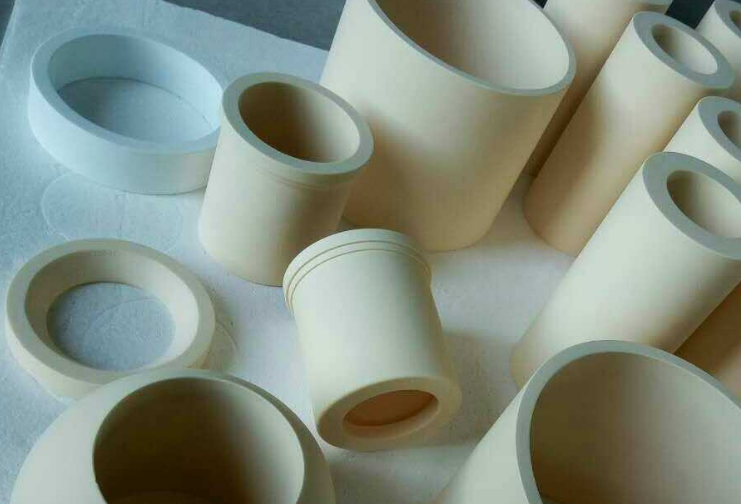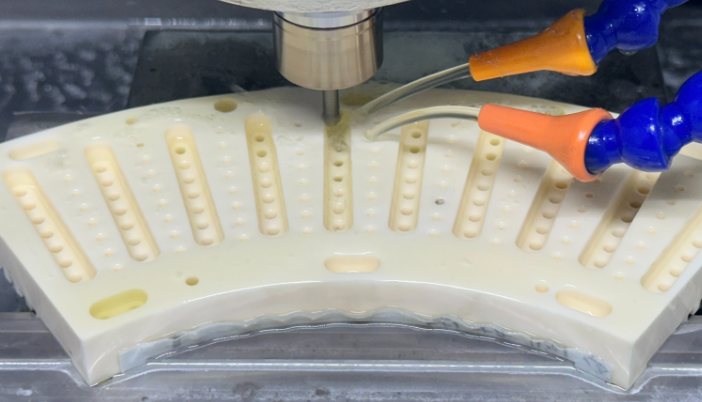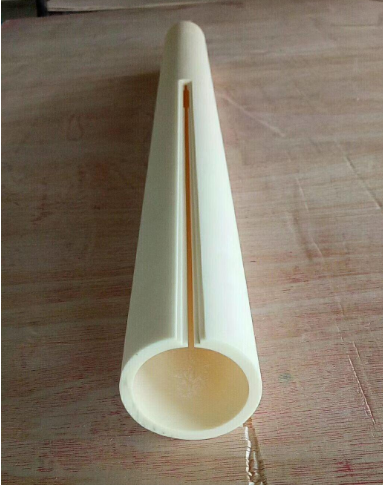Why alumina ceramics will change color
I believe we all know that the newly manufactured alumina ceramics are mostly white, but I do not know why after a period of use, sometimes alumina ceramics will begin to slowly convert from white to light yellow, and this is because of the discoloration of alumina ceramics after production. So do you know what are the reasons for discoloration after the production of alumina ceramics?

Introduction to alumina ceramics
Alumina ceramic is an inorganic material with excellent physical and chemical properties. It is a compound composed of aluminum ions and oxygen ions, and the molecular formula is Al2O3. Because of its high hardness, high strength, high temperature stability and corrosion resistance, it is widely used in the manufacturing of electronics, aviation, metallurgy, chemical industry and other fields.
Analysis of causes of discoloration of alumina ceramics
1. High temperature oxidation discoloration
Alumina ceramics are prone to oxidation reaction at high temperature, forming surface oxide film, resulting in color change. This phenomenon is particularly obvious in high temperature sintering process.
2. Chemical reaction discoloration
Alumina ceramics are prone to chemical reactions in some specific chemical environments, such as acidic or alkaline environments, resulting in spots or discoloration on the surface.
3. Discoloration by REDOX reaction
Alumina ceramics will also change color under the influence of REDOX reaction. When affected by reducing agents, alumina is reduced to the metal aluminum, resulting in a lighter color.

Material purity and impurity
Impurity elements: Aluminium oxide ceramics containing trace amounts of transition metal ions (e.g. Fe³ +, Cr³ +, Ti⁴ +, etc.) absorb specific wavelengths of light through electronic transitions, leading to colour changes. For example:
Fe³ + → Yellow or red
Cr³ + green (as in rubies Cr³ + makes Al₂O₃ red)
Ti⁴ + → Blue or grey
Purity grade: High purity alumina (such as 99.9% or more) is usually white, while low purity materials (such as 90%-95%) are more prone to discoloration due to more impurities.
Surface treatment and environmental factors
Surface pollution: contaminated with grease and organic matter during processing or use, carbonizing at high temperature to form black residue.
Acid-base corrosion or oxidation causes the formation of new compounds (such as Al(OH)₃) on the surface and darkens the color.
Coating/coating: Oxidation or peeling of functional coatings (such as metallized layers) may reveal areas of underlying discoloration.
Ultraviolet irradiation: Long-term exposure to ultraviolet light may trigger photochromic effects (sensitivity to certain impurities).

How to avoid discoloration of alumina ceramics
1. Strictly control the high temperature sintering temperature to avoid oxidation reaction.
2. In the production of enterprises, the chemical environment is strictly monitored to avoid the impact of the chemical environment on alumina ceramics.
3. Stay away from reducing agents or oxidants as much as possible to prevent the occurrence of REDOX reactions.
Raw material purification: Use high purity Al₂O₃ powder (≥99.9%) to reduce the introduction of impurities.
Process optimization: Control sintering atmosphere (such as inert gas protection), temperature curve and cooling rate.
Surface protection: densification (e.g., hot isostatic pressing) or coating with a protective layer (e.g., SiO₂).
Environmental management: Avoid exposure to corrosive media or long-term ultraviolet radiation.
There may be many reasons for the discoloration of alumina ceramics, but this phenomenon can be avoided as much as possible by improving production standards and strictly controlling the production environment. At the same time, in the use of alumina ceramics, it is also necessary to pay attention to keep its surface clean, avoid contact with chemicals and strong acids and alkali and other substances, to ensure its long-term use effect.